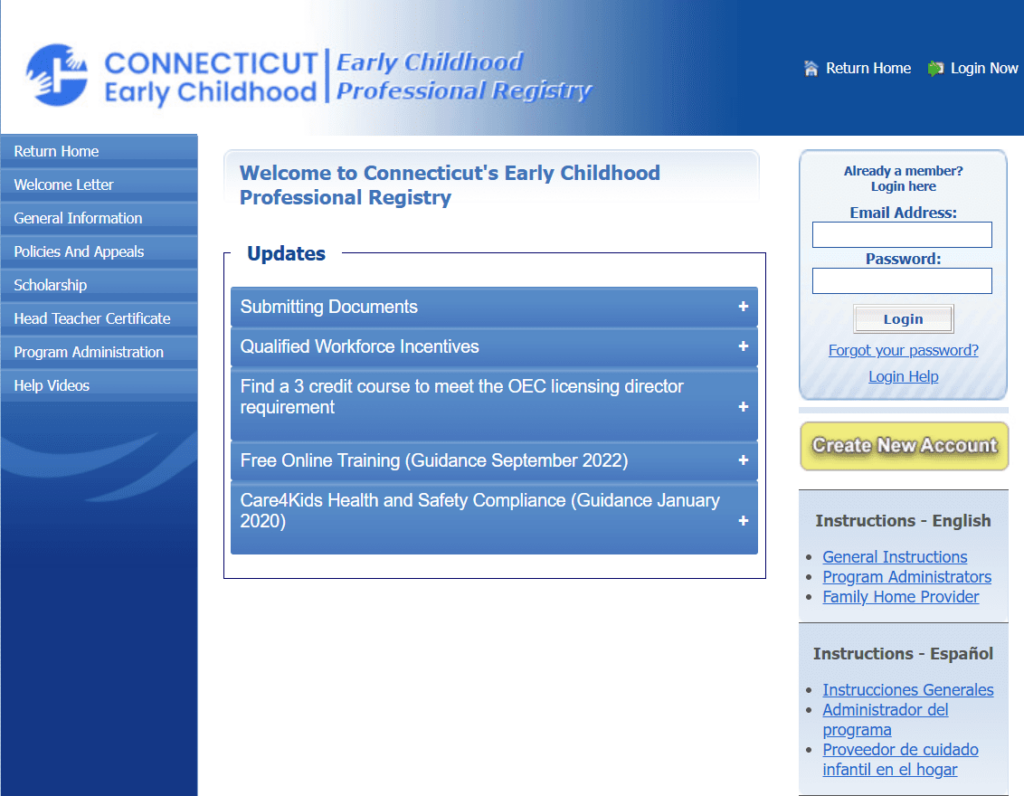Exploring Innovative Early Programs: Key Considerations to Modernize Your State Early Child Care Workforce Registry
Continuing in its fashion of forging pathways, our fourth blog explores how the CT OEC is attempting to centralize digital processes for licensing, accreditation, and other documentation to effectively support child care providers.
There is an ever-increasing demand for vital government services to go digital. For everything from voter registration to filing a police report, citizens expect to engage digitally for at least some step in the process. The early childhood education and child care ecosystems in the United States, which employ roughly 500,000 workers nationwide and serve millions of families, have the same need to improve their digital services.
Child care centers and their teachers and staff must comply with both state and federal licensing and accreditation standards. In many states, they register for government funding and reserve spaces for low-income children in their centers, which must be reported to the overseeing government agency. Yet, many states do not have a central digitized way to upload documentation, apply for grants or subsidies, or register their centers as accredited or employees as licensed.
The Connecticut Office of Early Childhood Education (OEC) engaged Third Sector to create a comprehensive implementation plan to update its digital child care Workforce Registry. Since 2007, the registry has been a central digital hub where child care centers and staff can obtain important workforce information, upload necessary documentation about licensing and accreditation, and act as a centralized repository for individual and center-level information. However, the way that citizens access government information and services has changed vastly since 2007, and OEC recognized that it needed to modernize its systems to continue effectively supporting child care providers.
The following are takeaways from this work that other states should consider as they modernize their digital workforce registries.
1. Consider the User Experience and Provide Clear Guidance— Connecticut’s registry centralizes records and functions across OEC systems and early childhood education (ECE) programs, allowing users to maintain consolidated records. However, the system can be challenging to navigate without clear guidance on how these functions and programs interact. Through a series of strategic workgroup sessions and an internal review of the current state of the Registry system, Third Sector recommended that OEC focus on enhancing the user experience and usability of the Registry and on creating easier and more focused support mechanisms for staff to help ECE providers. A user-centered approach encompasses both process-related issues (including user support and site navigation) and technical opportunities for improvement (like creating editable forms where possible and decreasing click rates for the entire website).
2. Conduct Extensive Stakeholder Research & Prioritize—Third Sector facilitated user research and engagements to explore and understand Registry users’ experiences, needs, and requirements to identify key insights and highlight opportunities for future improvement. Based on the key insights, Third Sector facilitated prioritization sessions with the Workgroup to identify the top 10 priority activities and develop implementation plans for each activity. The top 10 activities are categorized into three outcomes-focused themes:
- OUTCOME A: Improve the user support process to make users and OEC staff more efficient.
- Pilot a help request prompt to filter requests and direct users to the appropriate support method.
- Develop a centralized support system to streamline and triage Registry help requests.
- OUTCOME B: Procure resources to ensure the Registry system is agile and responsive to users’ needs.
- Expand access to dedicated Child Care Education Institute (CCEI) representatives to enable frequent and consistent improvements.
- Convert form uploads to electronic form submissions.

- OUTCOME C: Update the Registry to be user-friendly, clear, and intuitive.
- Create a terms appendix to clearly define the terminology used in the Registry.
- Create a technical FAQ to address common technical questions and support technical literacy.
- Provide clear criteria for what makes an acceptable upload and add a checkmark for users to attest that they have reviewed those criteria.
- Define the Registry’s purpose and functions for each user type and codify through user and system maps.
- Orient users on the Registry landing page to key activities or functions relevant to their roles.
OEC’s partnership with Third Sector on Registry improvements serves as a valuable case study on how governments can effectively address their citizens’ growing digital needs through strategic planning, community engagement, and innovative solutions. To learn more about Third Sector’s approach and how it may apply to your context, please reach out to Kesha Lee (klee@thirdsectorcap.org) or Dre Szegedy-Maszak (dszegedymaszak@thirdsectorcap.org).
